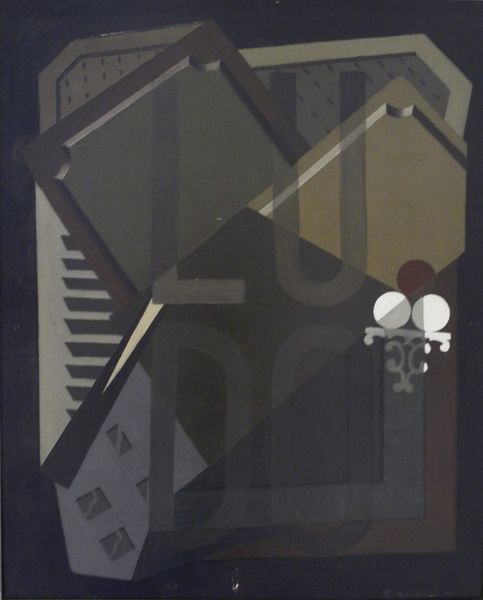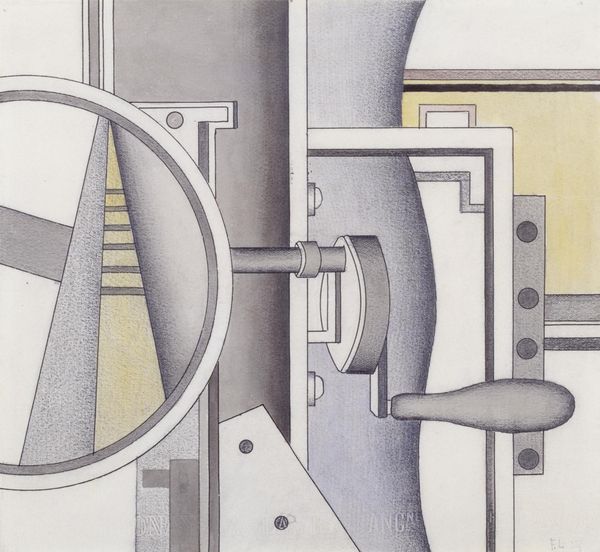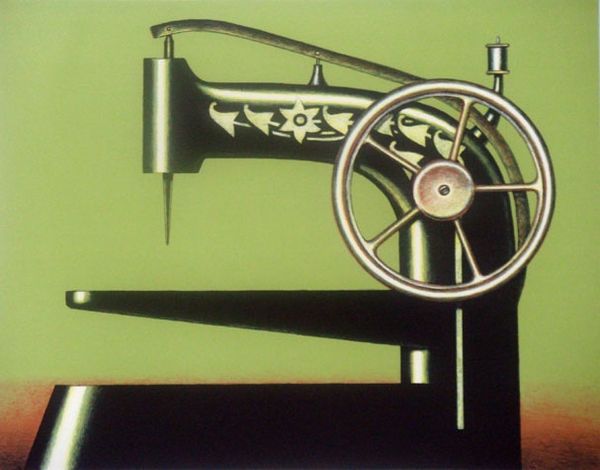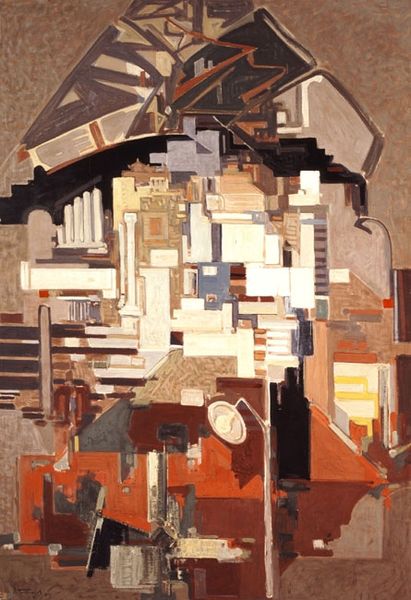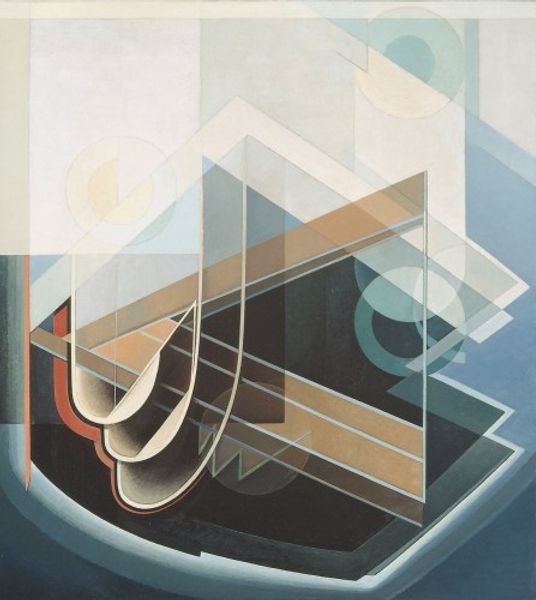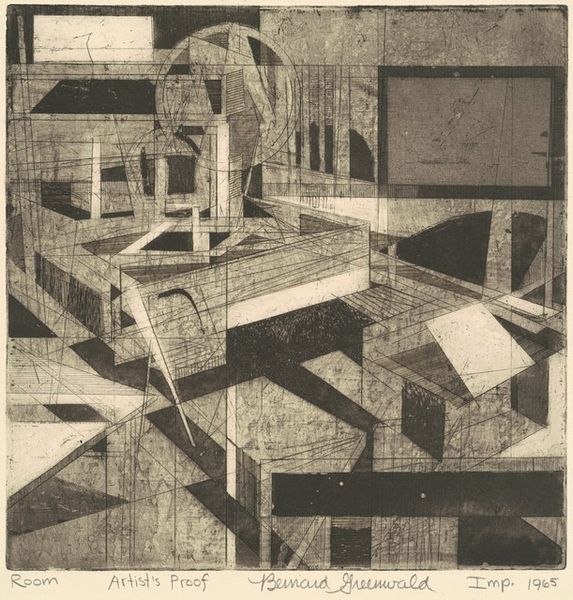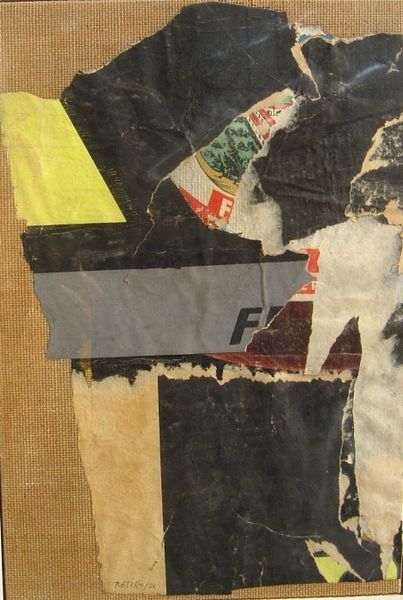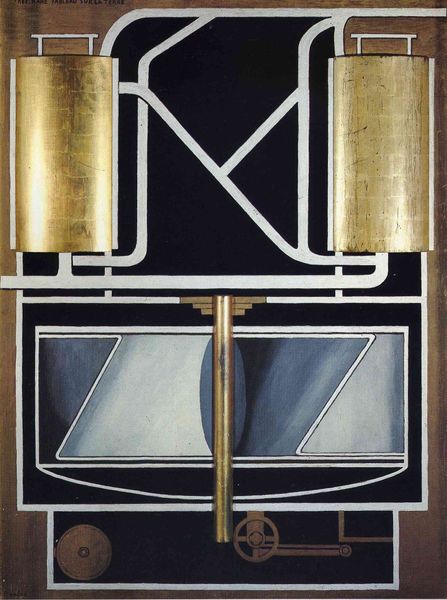
Dimensions: 93 x 85 cm
Copyright: Frantisek Kupka,Fair Use
Curator: Allow me to introduce Frantisek Kupka's "Music," created in 1936. This oil painting resides here at the Centre Pompidou, a compelling example of Kupka's kinetic explorations within abstract art. What do you make of it? Editor: At first glance, it evokes the feeling of a broken machine. There's a prominent wheel-like form but instead of radiating harmony, it feels… fractured, almost menacing, surrounded by muted greys. Curator: Kupka, who originally was making his living from spiritualist art and pornography before WWI, always was interested in dynamic states. It’s fascinating how he synthesizes the musicality of rhythm and the cold mechanics of modernism. His abstract-expressionist work often embodies this dance between technology and art. It's very clear when you explore other non-objective works, such as his series of work named "Disks of Newton". Editor: I see what you mean about dynamism – it’s like trying to capture the ineffable movement within the industrial age. Are we meant to interpret it as an optimistic piece, celebrating technological advancement, or does it carry a cautionary tone? Curator: The sociopolitical context informs everything; The work comes out only 2 years before the Second World War. Kupka, who fought during the war, later hid Jewish people and their possessions. So is he not, as one may interpret at first, concerned with technical advances or the purity of machine vision but the very opposite! But that is one interesting trait about art and abstraction: a work that initially comes off as unemotional or soulless can carry much more depth and feeling when seen in contrast with historic records. Editor: That completely reframes it for me! Knowing that, the wheel feels less like a simple, perhaps, idealized part of a machine and more like something bursting apart; even as a potentially self-destructive force... And knowing all of that is pretty crucial in appreciating the work on a greater scale. Curator: Absolutely. It's the layering of these historical narratives that truly enriches the visual experience. Art doesn’t exist in a vacuum. Editor: A very apt thought, perfectly embodying the artwork's spirit in both aesthetics and history. I think that sheds new light on "Music", revealing a powerful interplay between destruction and creation, just behind the grey geometrics and rigid figures!
Comments
No comments
Be the first to comment and join the conversation on the ultimate creative platform.
